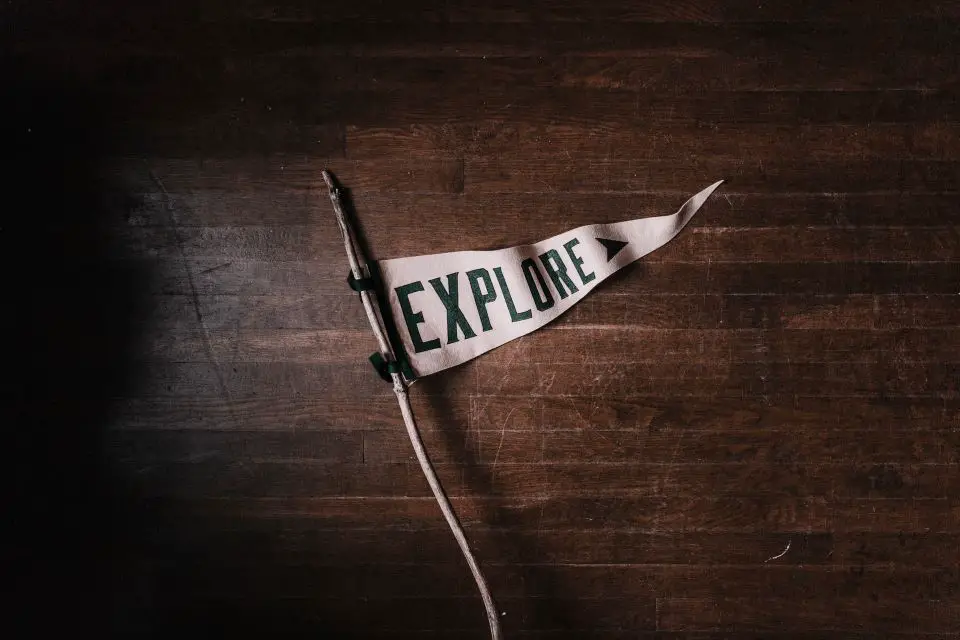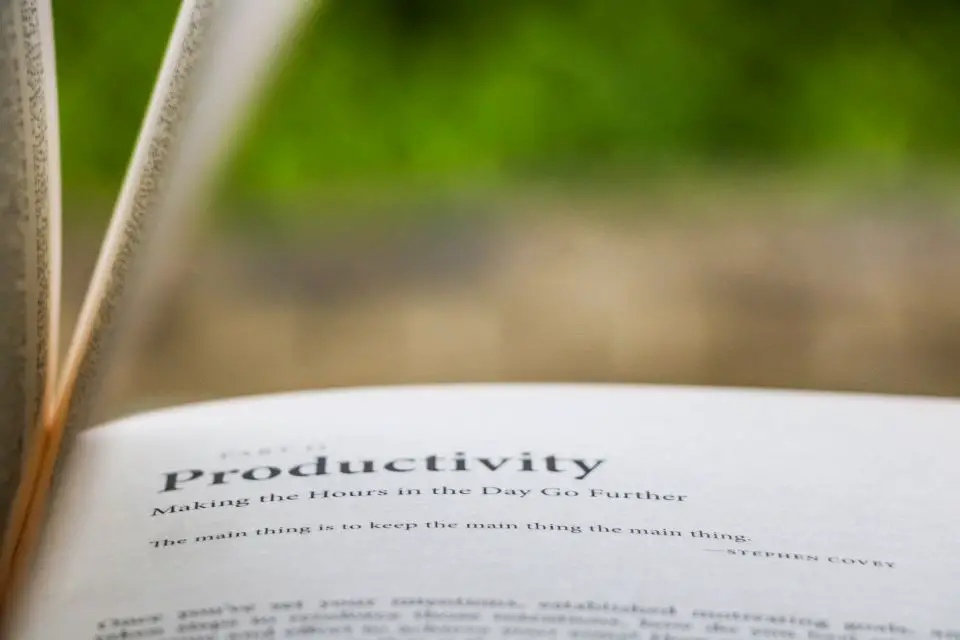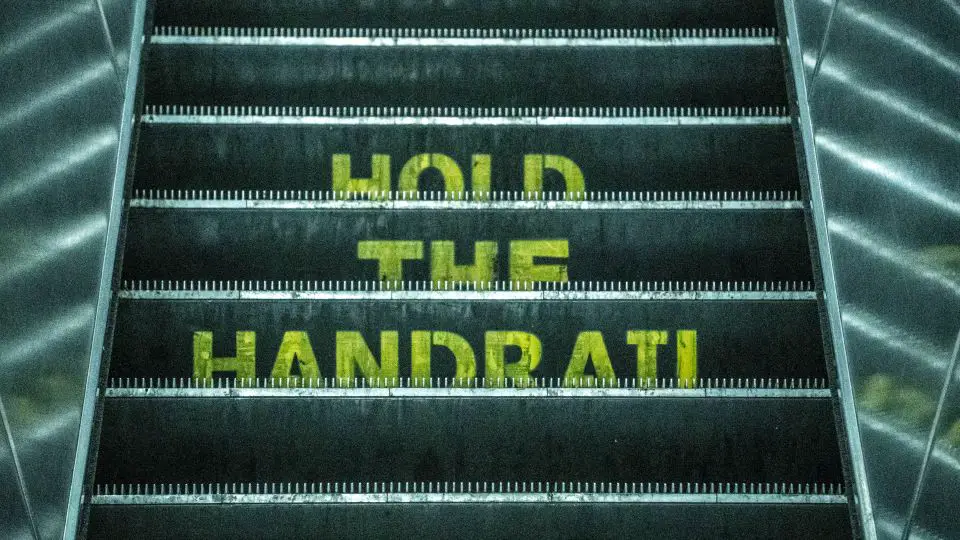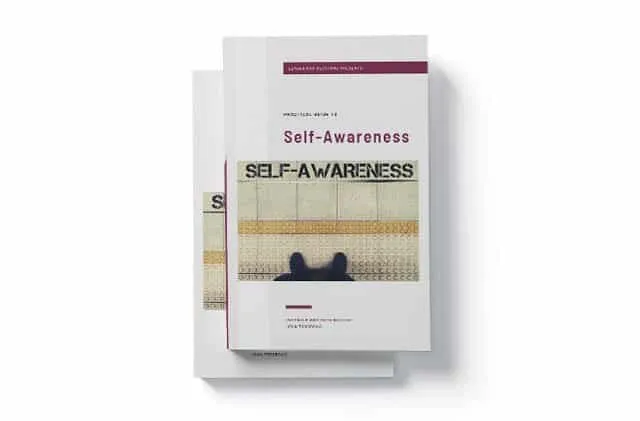Table of Contents
Leadership resilience has many meanings and interpretations. Some people refer to it as the ability to bounce back from obstacles and challenges. Others state it is how your mind perceives things after tough times.
There are many leadership resilience development strategies. In this article, I will share with you 8 steps and abilities that are in the heart of resilient leadership. Being a resilient leader can help you and your teams survive and thrive, regardless of the situation you’re facing.
Resilient Reflection
Because of this, I wanted to help you define the first step towards building resilience as a leader. Through my executive leadership coaching practice, I found many people develop leadership resilience in crisis through insight or reflection.
You can do that too by improving your ability to ask tough questions and then be honest to yourself. If you’re not honest with yourself, how can you be honest with anybody else?
The reason it’s crucial to do that brings me back to the early days of my career in the construction industry. That was in the mid-2000s, when I got my first leadership role as a supervisor on a construction site. We were at the end of the contract. We finished almost everything within the project, and a couple of things went wrong.
First, we did not complete one side of the project on time. We had some setbacks, and we had some challenges to complete it. This brought us further away from the completion date. It meant that the person who was paying us may cut our pay for the specific time. They will charge us for the excessive time that we used, without completing the project on time.
That really threw me off because I thought we failed. It was my initial thought. As I was early in my leadership journey, I have had no clue what to think. Have you ever experienced something like that when you were in your first leadership position? Did you experience any setbacks?
This was the time where the importance of resilience in leadership became apparent to me. It sped up my learning on how to be a resilient leader and how to develop resilient mindset.

Over time, I studied examples of resilient leaders and adapted an improved three-step process. You can go through it too, so you can start building leadership resilience, which you can apply in personal life as well. Here’s how it goes. Remember, I told you it’s an ability to ask tough questions and be honest to yourself?
Imagine if you had a specific setback within your company, within your team. Maybe some of your employees were facing challenges. Ask yourself: what are the three things that have happened that I can learn from?
Once you find the answer, see what you could have done if you had the ability, the skill, the funding or anything else to overcome that obstacle much faster than you did. This step accomplishes 2 things. You’re looking into the past and the present for a learning experience.
Now it’s time to look forward and figure out how are you going to improve yourself, your team, your company, while progressing in your leadership journey, and building leadership resilience.
What are the three skills or three capabilities that you can build as a leader moving forward? These skills will help you improve yourself, your team, your company, and anybody around you. Make sure you write those answers down.
That is a crucial part because once you write them down, you can then schedule, measure, and review them. You can review them every 3, or 6 months, every year, it’s completely up to you.
Repeat this process on the regular basis. I do reflection daily. Some heavier insights I typically do weekly, every Sunday. If you want to take your resilience as a leader to the next level, do the reflection daily and then do a weekly review.
Resilient Abilities
One of the most challenging things that crosses my mind in difficult situations is this question: Am I really able to take the pressure during frustrating times and figure out exactly what to do next?
During my career in the construction industry, I remember how challenging it was for me to handle my first leadership role. That was my first experience in a different country, in an unfamiliar environment, with different culture, different people. Everything was different.
At that point, the situation started playing games in the back of my mind. I was questioning every move that I was making, thinking that I am not capable of doing certain things.
Looking back at it, I realize I was partially correct. I did not have the leadership skills that were needed back then. What I didn’t realize is that instead of learning how to use the situation to my advantage, I just pondered on it.
I just kept on thinking. After a while I had to snap out of it. What do I have first? How can I convert this experience into something that I can use in the industry that I’m in?
Eventually, I found a simple way to look into a challenging situation and turn it over into a success. It helped me perform better as a leader, my teams perform better, and that everybody around them also performs better.

Success and performance are contagious. When I see somebody else succeeding, I want to aspire to achieve as much as they do or more. That’s not because of envy. It’s because of modeling other people’s resilience and leadership. Here’s how you can use a simple two-step process to review what you know, and what you can do in the future.
If you have a pen and paper next to you, or you have your digital note taking app, write three skills or abilities that you are great at as a leader today. Whatever it is, if it’s communication, time management, decision-making, delegation. Think about any of those skills or abilities that you have.
Write them down, write at least three. If you have more, by all means, write more. Consider if you were in challenging times, how helpful will those skills be for you? Are they going to help you instantly solve any problem or challenge? Do you need to develop a new set of skills? If it’s the latter, write three skills or abilities that you will need starting today.
Is it something that you’ve been always thinking about working on, or is it something that you will need next time a challenging time comes along? Write those down. Once you do that, you’ll have the second step completed towards moving forward as a leader, building skills and achieving great things. People depend on you and before they continue depending on you, you need to depend on yourself. Develop those skills and become the resilient leader.
Resilient Awareness
Seeing challenges coming your way before they occur can be extremely beneficial if you’re building your leadership resilience. If you already have it, you can help develop resilience for leaders around you.
If you don’t see the challenge coming your way, you don’t react the right way, or you don’t find the solutions timely, that might cause a negative consequence. This brings me to the third step in leadership and resilience, which develops awareness and will help you define what is a resilient leader.
Use resilience and awareness together towards building your self-leadership skills. Ideal example of self-awareness for me happened at the time of writing this article. I looked at it from the perspective that I’m going to share with you today.
The internet connection at my home office went out. I did the typical troubleshooting, restart the modem, check the cables, and did all the things needed. Since that didn’t work, I tried calling the customer service line. I’ve spent 10-15 minutes waiting on the line, with a nice background music. That didn’t work also as the line got cut after a while.
The next logical step for me was to go to social media and see if people are having the same challenge. Guess what they were saying. They’re experiencing the same problems. Most of them went for the same promo as I did the day before and upgraded their connection for free. The connection went out overnight and it hasn’t come back yet.
This situation presented me with the choice. In my twenties, I would react negatively to it. I would get frustrated, think about too many things, try to solve a challenge that already occurred. I could not prevent it at this point. There were three choices that I considered.
The first one was obvious. I will sit there, do nothing, and get frustrated by the inefficiency of the system. The second choice was better. I could figure out my resources and find an alternative solution. I could have gone out and bought a Wi-Fi portable modem or something else that can serve as a backup. All it takes is for me to sit in the car and go to the store.
The third choice was different. While the connection is out, I can spend quality time with my family, with my wife and my one-year-old boy. Guess what choice I made. The last one. You might say, it’s easy for you because you’re an entrepreneur, you don’t have fixed working hours. That’s correct.

It doesn’t mean that you cannot make similar choices. Building self-leadership and building leadership resilience requires you to be aware. Take any situation, whether it happened today or over the past seven days. Something that was really a challenge, or you didn’t expect it.
Here’s how you can do it. Analyze and think about it for a moment. The first thing I did before I made those three choices, I sat down and observed what my mind was doing and how my body was reacting. You can do the same. Look into the challenge and observe how your mind is reacting.
Is your mind sending the signals that you are becoming more anxious? Is your heart rate increasing or you’re having trouble breathing? What is happening to your body and what is your mind telling you? Listen to it, but not for the sake of doing what it says, just for listening in.
You will learn a lot by just observing those thoughts. You can do it by standing or sitting down in a comfortable position. You can even close your eyes, focus on the breathing, and then observe how your thoughts are coming through. Your awareness will increase tenfold.
Then you can make a conscious choice and decide. What are you going to do next? If that problem is not solvable from your own perspective, why don’t you find somebody who can help you? Check your own organization, who can help you solve that problem?
If you’re a business owner, who can you call? Is it another manager? Is it one of your teammates? Is it one of your employees? You can also call or message your coach, your mentor, or somebody you trust. Discuss it with them rather than getting frustrated.
This is just a simple activity you can do daily and figure out how to develop leadership resilience. Anytime you’re facing a challenging situation, you can absolutely use this to make better choices, and move forward while you’re building your self-awareness.
Resilient Relationships
Think about how amazing it is to have the ability to tell something that’s on your mind without fear of repercussion, or that people will judge you.
While you’re building resilience as a leader, it’s also crucial to build relationships. Resilience requires you to have the relationships built up either prior to the challenging times, or you can use the opportunity during those challenging times and build them up then.
There is no excuse to stop building relationships. If you have a team that was performing well prior to any challenging times or any obstacles that you may have encountered, that doesn’t mean you should stop developing relationships, stop building up your people and nurturing the culture.
It means that you should double up your efforts and support your people. As effective leaders, we should always take those relationships and nurture them like a little droplet of water that you would keep while you were in the desert. Those relationships can make or break your team, your people, and your organization.
If you’re a business owner, and you are trying to keep the business together and keep the revenue coming in, the number one thing that you should maintain is relationships. Some of you may say cash flow is king. I agree, you should maintain healthy cash flow. It’s also crucial that you get people to interact with you and that you interact with them.

To help you define the fourth step in how to build resilience in leadership, I would like to ask you to do one thing. If you haven’t done it yet, reach out to somebody within your company, within your organization, within your community.
Leadership transcends beyond just your company. Reach out to one person who you haven’t reached out yet since the pandemic started or in the past couple of months. Reach out to them and just say hi. Just see what’s been on their mind, what’s been happening and listen to them.
Don’t call them just for the sake of calling and quickly finish up the conversation. Actively listen to what they say. That will enhance your relationship, no matter what level that relationship is on. While you’re leveling up that relationship, you will develop your people building skills, team-building skills.
You can take it and apply it in your organization in the same manner. To do it consistently, I highly recommend doing it at least weekly. Do it at with your peers, people in your department, or with people within the organization that you’re at.
You can ask meaningful questions. This works for in-person and through online conversations. If somebody was working on a specific project, ask: “Hey Mark, how’s that XYZ project coming along? Do you have any challenges?” Wait for them to respond, listen, try to understand and comprehend.
If they are having some challenges, offer your help. Test that out and you will see magnificent benefits day in and day out. Continue learning how to become a resilient leader through your skill in building relationships.
Resilient Curiosity
I often wondered how easy would it be to have all the answers. Picture yourself right now, if you had all the answers to the questions that were posed to you before today and in the future. Would that be interesting? Not for me. One thing that I realized during the pandemic is the importance of curiosity.
We often talk about all the things that are needed for us as leaders to figure out what to do, when to do it, then how to do it. One crucial element that often remains neglected is curiosity.
It’s our natural ability to figure out things as they come along. To keep on growing, to keep on discovering, to keep on asking questions. One thing that I understood is that the moment we stop asking those questions is the moment our ego might take over.
Anytime I think about situations in my life that were challenging, I always remember wanting to prove somebody wrong in my mid-twenties. It was at the beginning of my career in hospitality. Just an ordinary day and it was a simple customer comment. I was so stuck beyond my beliefs that I failed to understand really what the customer was telling me.
It was just the comment on the way our staff served the food and how fast the food came out. I remember trying to explain to the customer that we have standard operating procedures. I went into explaining about things that were coming through, how they come through, and what happens with them.
What I failed to notice is that the customer was just trying to help me out. I was doing the opposite. Instead of being curious and really listening to the customer to understand what he was trying to explain to me, I was sticking with my story. That situation was not going the right way.

To replace that habit, there were a few things I had to do. This brings me to the fifth step on how to become a resilient leader.
The first thing is to be really curious. That curiosity brings me to active listening because that develops communication skills and develops you as a leader.
When you’re building leadership resilience, remember to always stay curious. It’s impossible to have all the answers because you still haven’t lived the scenarios that are coming your way. Stay curious. Ask yourself the following questions:
- What can I do next?
- What can I learn next to improve my skills?
- What can I do to overcome the situation where I’m challenging everything that’s coming my way?
- What can I do to improve people around me?
As leaders, we need to ask ourselves these questions because our teams depend on us. If you want your team to succeed, and if you want to succeed as a leader, continue staying curious. Curiosity can bring you three things.
One, more knowledge, two, more experience and three, patience. If you develop that curiosity in the right way, you will have patience to listen to people. You will have patience during challenging times, and you will always ask the questions that will bring you more knowledge.
Resilient Productivity
I want to achieve everything. Today! That’s a crazy statement. I always thought that I’m an achiever because I was always striving for perfection and immediate results. My priorities were to get my scheduling order, to get my time blocks in filled, and all the tasks off the list checked off. When the challenging times come in, most of those things fall flat completely.
Did you ever experience that? How was it during the start of the pandemic? How did you feel back then? I remember feeling overwhelmed. I was checking Twitter all the time. I was watching all the possible news channels to see what’s happening.
I ended up doing nothing except stressing out throughout the day. I became totally unproductive for at least a week. Why was it different that time than it was any other time?
If I want to stay productive, even during the challenging times, there is a simple thing that I can do. This is the sixth step in building resilience as a leader. After a week, I turned off all the possible news outlets. I stopped checking Twitter.
I just refocused my thoughts and did a simple exercise. I listed down three things that I have achieved over the past week. Even if it was the smallest possible thing, like cleaning up my office.
If I cleaned up the desk, that was considered one thing. Next to it, I wrote how did I feel. I listed three feelings that were based on either of those things listed. Did I feel accomplished? Did I feel enthusiastic, motivated?

After I saw what I achieved over the past seven days, why don’t I list what I wanted to do for the next seven days.
What did I want? I want to record a couple of videos for my Facebook page. I wanted to complete the personal financial data sheet. I wanted to write an article for my blog.
Next to those three things, I wrote three feelings about how I would want to feel if I accomplish those three. Suddenly, that’s not too difficult. That can probably boost my productivity over the next couple of days.
I started repeating the process and within a few weeks I increased my productivity and therefore built my resilience. If you apply that same principle in your workplace, in your company, even in your personal life, you can further enhance your leadership and resilience.
What are the three goals that you want accomplished at work? No matter how small they are.
- Did you finish that report?
- Did you finish filing some archived items?
- Did you email the client?
- Write it down and then write how you felt.
- How did you feel about that moment?
You can even expand this exercise to monthly, quarterly, and yearly setup. After you continue repeating that process, you will celebrate small wins and become more and more productive. You will focus on the right things, rather than focusing on all the challenges that are surrounding you.
Resilient Routines
I don’t want to do this every day. It’s just not possible to do it consistently. Why not? You wake up every morning, you eat, you go to work, you go back to sleep. One of the fundamental pieces of the puzzle in leadership is developing routines, especially in challenging times. This is our seventh step in understanding what is leadership resilience.
Leadership resilient routines are the ones that are going to set you apart towards success. Surviving and then thriving after the challenging times. I remember for the past 15 years in any leadership role that I was; I could not go through the one day without having a developed routine. Yes, I had completely different routines 15 years ago, and they developed into routines I use now.
I remember every year something new came along. As I was developing those routines, my teams developed as well. I established certain routines so I can dedicate more time to spend with my team and help them progress or grow. That was even more apparent when I started my entrepreneurial journey.
When I started my business, routines were, without a doubt, one of the most crucial parts. You might wonder why. When you’re answering to yourself, if you don’t establish that discipline, those routines, you might find it challenging to succeed in entrepreneurship.
If you are not a business owner and you work for someone else, leadership resilient routines will make a difference for the entire company. If you lead a team that depends on you and some decisions that you make and vice versa, where you depend on decisions of your team, it’s crucial that you establish those routines.

What I did at the start of my entrepreneurial journey is every couple of months I would sit down and have a brief conversation with myself.
I would write what I’ve done well, and how did those things work out? What results I produced? I will audit my day, the entire day, Monday through Friday.
You can do the same. You can audit every day of your work. If you’re working six or seven days, that’s okay, audit it.
To have a better comparison of productivity in your life, recall and audit one day before the pandemic. Try to remember one of those days, everything that you have done. You can split it up and you can do the personal routines and professional routines.
What you did at home and what did you do at work? Once you list all the routines, have a look at the ones that are most essential and then tick them off. Are there any routines that you did that we’re not producing as much result? Once you do that, compare it with today’s routines.
Look at the routines that you are doing nowadays in these challenging times. How do they compare to the previous routines that you had a couple of months ago? Which routines are different? Once you discover that difference, think about how you could strengthen or replace some routines.
Now that you have that comparison, use those two samples and think about how can that translate it into your future success. Your team, your peers, your company depends on that. Once you establish a groundwork, you will see how you can develop your routines in the future.
Repeat the same process over and over until you find something that really suits you well. Remember, there is no one size fits all recipe. Leadership and resilience depend on your routines.
Resilient Responsibility
I am responsible for my own actions. Anything that I do, I will always stand behind it. Do you stand behind your actions? Regardless of the situation, as leaders, we need to be responsible for our own actions and for the actions of our teams. The eighth and final step in building resilience for leaders is responsibility.
If you don’t hold yourself accountable and responsible for what is happening, then you need to reconsider your approach towards leadership. Really consider, what are you trying to achieve as a leader?
What are you trying to do within your company, within your team, or even in your personal life? Being a leader is not something that you should take for granted. If you’re just beginning your leadership journey, the first thing you need to do is take responsibility.
I hold myself accountable since the first action that I have done in my first leadership role. During my career in construction industry as a supervisor on a construction site, my team had a simple task. The workers were building the perimeter wall to a specific length and specific height around the subdivision.
Because it was on an uneven ground, they’d have to follow a certain slope. I thought I had calculated the measurements correctly with the team lead. Can you guess what happened to the wall? It didn’t turn out the same way it was in the plans. We had to re-adjust the wall by about 10 meters.
When you are building a wall with hollow blocks, it’s not just that you can move it around. I took responsibility for my own actions. I reported to the site manager and told him what happened. It was a costly mistake, not just in terms of finances, but also in terms of time consumed.
If you want to help people in challenging times, take responsibility. Help people out, help yourself as well. Be responsible as a leader and as a human being within your company, community, and within your family.
Leadership and resilience play a huge role in my life. I hope they do the same for you. Do you know how to build resilience in leadership? Share your story in the comment section. I’m excited to learn from you.







